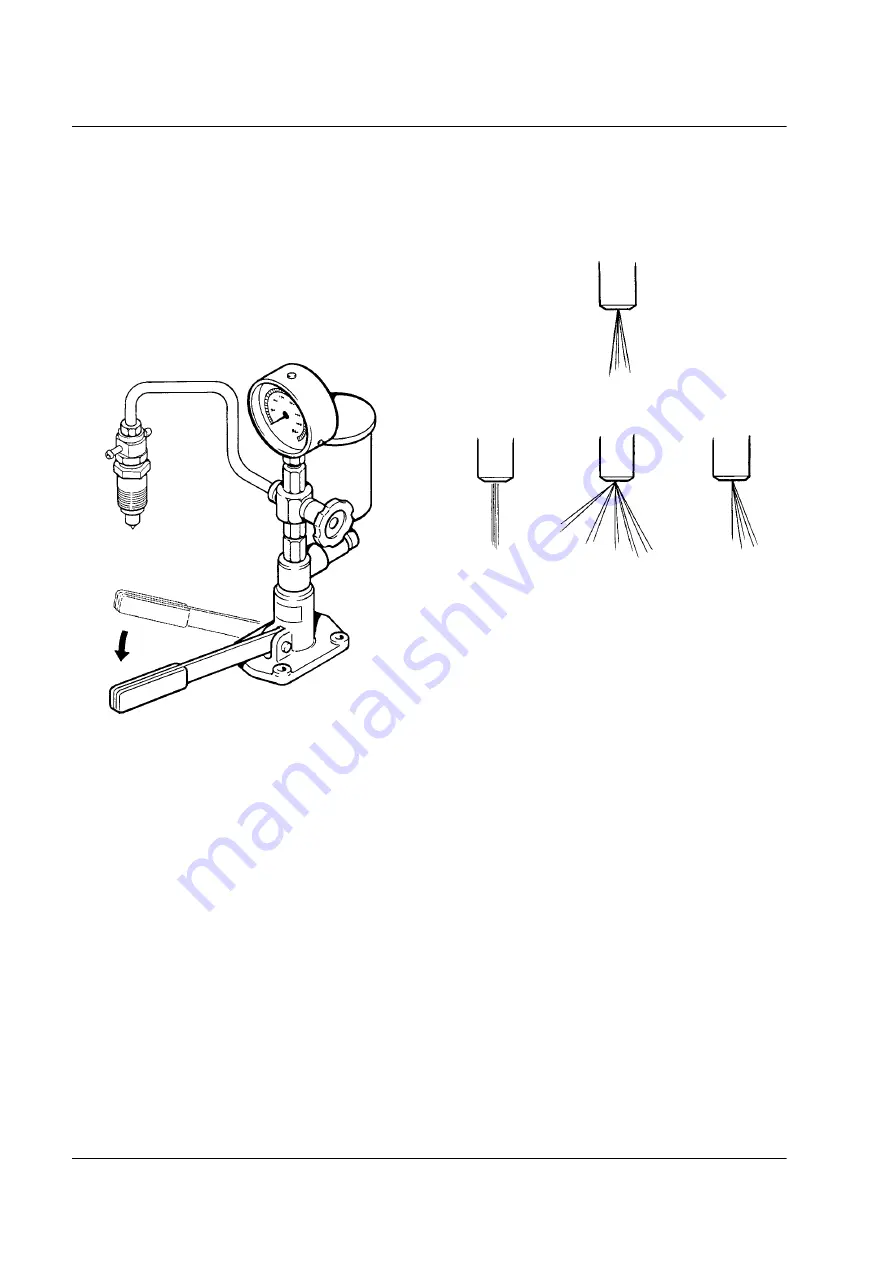
Fuel System (Rev 1/97)
98
CAUTION: Keep your hands away from the nozzle spray.
The nozzle spray is at such high pressure that it can break
the skin and penetrate into the underlying tissue. Such an
injury is very painful and can lead to serious complica-
tions such as blood poisoning.
Testing Injection Nozzles
2. Close the pressure gauge valve and push the hand lever
completely down several times.
a.
The injection nozzle should make a shrill whistling
noise.
b. A straight conical spray pattern should form along
the center line of the injection nozzle, with a cone
angle of 5 to 10 degrees.
c.
The spray pattern should make a perfect circle on a
piece of paper placed 12 in. (300 mm) below the
injection nozzle.
aea358
Acceptable Spray Pattern
Unacceptable Spray Patterns
3. Open the pressure gauge valve and check the opening
pressure by pushing the hand lever completely down
several times.
a.
The injection nozzle should make a buzzing sound.
b. The opening pressure should be 1707 ± 73 psi
(11768 ± 500 kPa).
c.
Adjust the opening pressure by changing the num-
ber of adjustment shims above the spring. Refer to
the injection nozzle repair section.
4. Leave the pressure gauge valve open and check to see if
the injection nozzle drips by slowly pressing on the
hand lever to bring the pressure up to 300 psi (2068
kPa) below the opening pressure of the injection
nozzle. Maintain this pressure for at least 5 seconds.
Fuel should not drip from injection nozzle in less than 5
seconds.
5. Repair the injection nozzle if it fails any of these tests
or if fuel leaks out of the return collar ports during the
tests.
aea359
aea360
















































